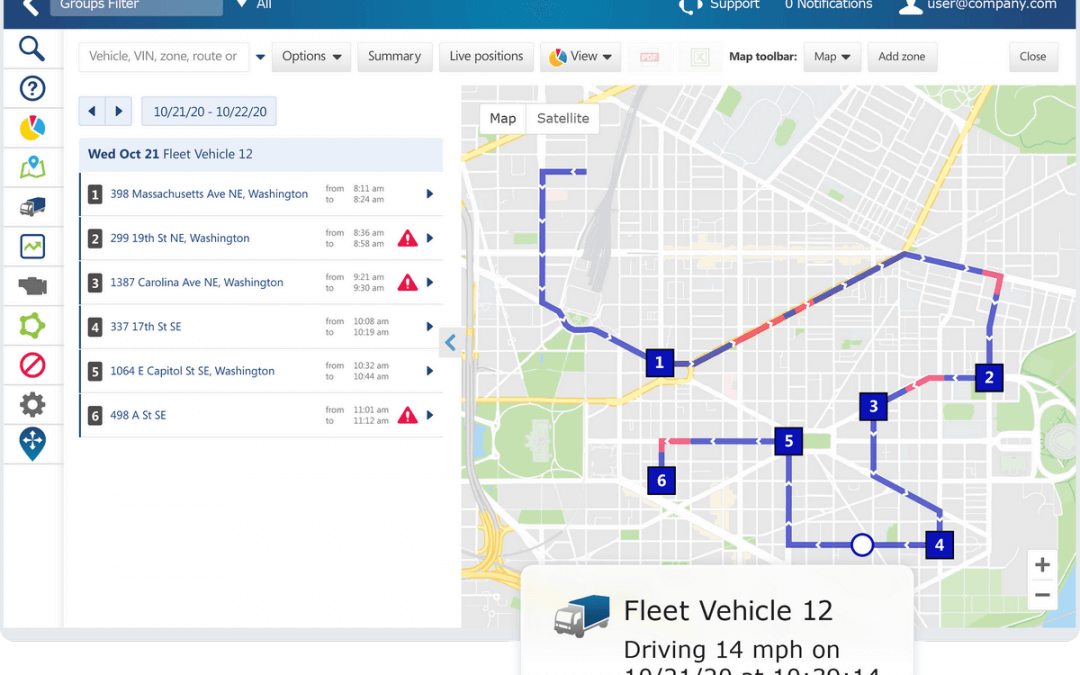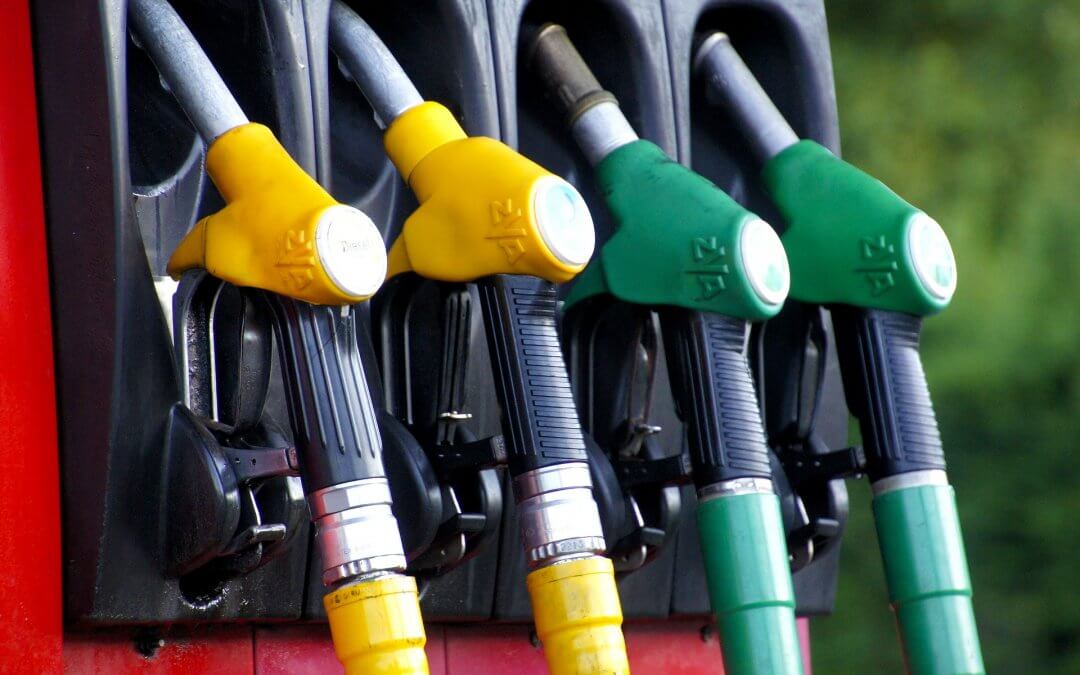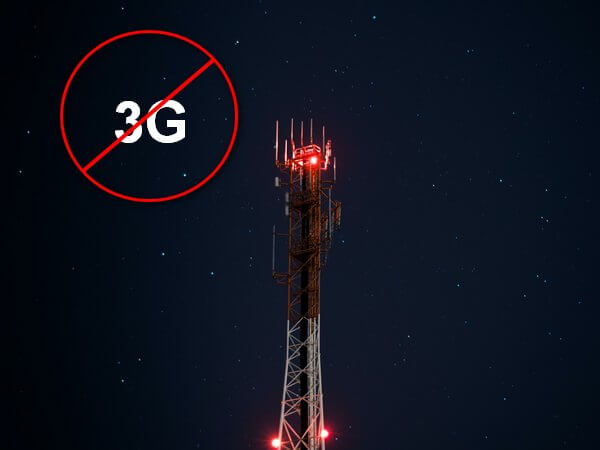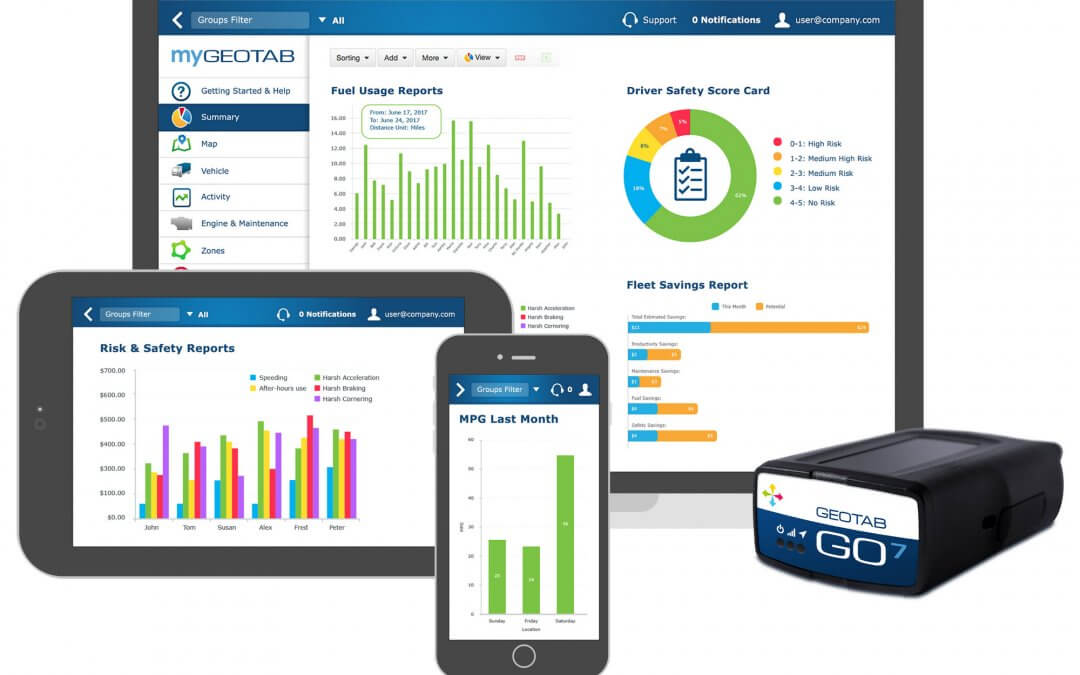
Fleet Management, Telematics
Responsible fleet companies are always seeking innovative ways to enhance efficiency, reduce costs, and optimize their operations. Over the past decade, embracing technology has become paramount in order to reach these goals, and telematics solutions, especially fleet vehicle GPS tracking systems, have emerged as indispensable tools for successful fleet management. At Vehicle Licensing Consultants, we want to help educate our community by outlining a step-by-step process that fleet companies can follow to acquire a top-notch telematics solution, ultimately transforming their fleet operations and maximizing productivity.
Step 1: Identify Specific Needs and Objectives
The first crucial step is for the company to clearly define their needs and objectives concerning telematics in vehicles. It’s smart to conduct an internal assessment to determine the key pain points and areas for improvement. Common objectives may include real-time tracking, fuel efficiency monitoring, driver behavior analysis, route optimization, and maintenance scheduling.
Step 2: Research Telematics Providers
Once the company’s requirements are outlined, research reputable telematics solution providers in the market. Look for companies with a proven track record, positive customer reviews, and a comprehensive range of features to address your identified needs. Pay close attention to scalability and ease of integration with existing fleet management systems. At VLC we can help with this with product buying guides from companies such as Geotab.
Step 3: Compare Features and Customization Options
During the evaluation process, compare the features offered by different telematics providers. Look for core functionalities like real-time tracking, geofencing, driver performance monitoring, and customizable reporting. The ability to tailor the solution to the company’s unique needs is essential for maximizing the benefits of the telematics system.
Step 4: Consider Data Security and Compliance
Given the sensitive nature of fleet data, security should be a top priority for any fleet company. Make sure that the chosen telematics solution employs robust encryption, authentication protocols, and follows industry best practices for data protection. Additionally, consider whether the provider complies with relevant data privacy regulations to avoid potential legal pitfalls which we at VCL know is critically important.
Step 5: Request Demonstrations and Trials
Before committing to a telematics solution, request demonstrations from the and, if possible, trial periods to test the product’s usability and effectiveness. Engage relevant stakeholders, including both fleet managers and drivers, to gain insights into how the solution will fit into the company’s daily operations and receive feedback on ease of use.
Step 6: Review Costs and ROI
Analyze the pricing models of the shortlisted telematics providers. While cost is a significant factor, focus on the return on investment (ROI) the solution can offer. Consider long-term benefits such as fuel savings, reduced maintenance expenses, improved driver safety, and enhanced customer service to get a more comprehensive view.
Step 7: Seek Customer References
Request references from the telematics solution providers to gauge their level of customer satisfaction. It’s also not a bad idea to reach out to other fleet companies who are using the system to get honest feedback on its performance as well as on customer support and overall experience.
Step 8: Negotiate the Contract
After selecting the ideal telematics solution provider, negotiate contract terms that align with the company’s requirements. Pay attention to contract length, service-level agreements, upgrade options, and cancellation policies. At VLC we are happy to help with any questions or concerns you have and we support you through each step of the process.
Step 9: Implement and Train
Once the contract is finalized, work closely with the telematics provider to ensure a smooth implementation process. Train relevant personnel on how to use the system effectively and extract valuable insights from the data collected.
Connect with VLC About a Telematics Solution Today!
Incorporating a telematics solution into fleet management is a game-changer for modern businesses. By following these simple steps, modern fleet companies can confidently choose the right telematics solution that meets their specific needs, empowers efficient operations, and contributes to the overall success of their business. Give us a call at Vehicle Licensing Consultants at (530) 637-1696 or reach us by email at info@im4trux.com to learn more!

Telematics
Truck fleet management is about much more than just driver safety. A driver management system can help keep your drivers on the road and your fleet running smoothly. A driver management system can help you manage driver safety, compliance, and productivity, especially if you set up e-logs. Let’s take a look at how telematics fleet management can improve your operations overnight.
Leveraging GPS and Telematics Data from Your Fleet
Thanks to GPS and telematics technology, you can track the location and movements of your drivers in real-time. This information can help you monitor driver safety and compliance, as well as track productivity your drivers are. You can also use this data to set safety standards for your fleet. For example, you might require your drivers to follow certain maintenance procedures during their trip or to drive at a set speed for legal and liability purposes.
Track Fuel Usage
Another great use for GPS and telematics data is tracking fuel usage. By tracking this information, you can ensure that your drivers are being driving efficiently as possible and avoiding costly mistakes. This data can also help you set fuel efficiency standards for your entire fleet. Once you have that data, you can correlate it with financial performance to see where further optimization is possible.
Streamline the Inspection Process
In addition to tracking driver safety and compliance, a telematics solution can also help streamline the inspection process. By automatically logging inspection data, you can ensure that your drivers are following all safety standards. This data can also help you identify any problems with your fleet quickly.
Set Safety Standards
Finally, a telematics fleet management system can help you set safety standards for your fleet. By automatically tracking accident data, you can identify any trends that might warrant stricter safety measures. This data can also help you identify any areas where you could improve.
There are certain standards that all fleets should adhere to. By using a telematics management system, you can ensure that all your drivers are following those standards to reduce business and reputational risks.
Optimize Your Fleet with Telematics Fleet Management from Vehicle Licensing Consultants
Vehicle Licensing Consultants can help you optimize your fleet with telematics fleet management. By using GPS and telematics data to track driver safety, fuel usage, and productivity, you can ensure that your drivers are operating safely and efficiently. Learn more about TripDAWG’s telematics fleet management tools and how they can help your company deliver more productivity than ever before.

Telematics
How Vehicle Telematics Are Improving Fleet Management in Every Field
From a management perspective, few things have been better for working fleets than the introduction of vehicle telematics. Utilizing smartphones, tablets, and other devices, these systems can hook directly into the computer systems of a vehicle. They then monitor and capture vast amounts of data, more than a human driver could ever keep track of while making it instantly available for analysis and reporting.
If your fleet doesn’t have telematics systems in every vehicle, you’re almost certainly missing out on opportunities to optimize your fleet, save money, improve safety, and reduce avoidable downtime.
Four Ways Vehicle Telematics Improve Your Fleet Management
1 – Spot maintenance problems early
Typically, maintenance problems on vehicles start small and become more troublesome as time passes. Truly “out of nowhere” breakdowns are extremely rare. By monitoring, analyzing, and tracking your vehicles’ performance, you’ll be able to spot the small red flags that something’s wrong (like sudden drops in gas mileage) and fix them before they turn into big costly problems.
2 – Encourage better driver behavior
There are numerous ways that your drivers can help improve efficiency, reduce fuel costs, and avoid legal violations – but it’s often hard for drivers to self-coach and analyze their driving patterns. By having detailed information about every mile of the journey, you can spot wasteful activity – like accelerating and braking too hard – or be warned if a driver is violating the law too often. This leads to excellent coaching opportunities that improve efficiency.
3 – Increase accuracy in vehicle reporting, compliance, etc
Bureaucracy and regulations are an unfortunate fact of life when managing a working fleet – and you want to make sure your paperwork is as accurate as possible. With telematics systems, you’ll have highly accurate and detailed information for all your filings. This prevents costly errors or – worse – fines from incorrect reports.
4 – Proactively replace parts before breakdowns
How many miles do a truck’s tires still have on them? What’s the expected lifespan of the spark plugs? These details are almost impossible to keep track of manually, but with telematics paired with fleet management software, you’ll be able to know whenever any component on a vehicle is nearing its expected end-of-life. This allows you to proactively schedule replacements before any accidents or breakdowns happen – improving driver safety as well!
Vehicle Licensing Consultants offers the software solutions that make the most of your telematics. Contact us to learn more about your options.

Telematics
Smart Vehicle Telematics Can Significantly Improve Your Fuel Efficiency
Some of the best new fleet management technologies come from the field of vehicle telematics. It’s now possible to monitor almost every aspect of a vehicle’s performance while on the road, in real-time. This additional level of oversight can improve numerous aspects of fleet management, but it’s especially useful for reducing fuel costs.
With fuel continuing to become more expensive, it’s more important than ever to focus on fuel efficiency if you want your fleet to be cost-effective. Vehicle telematics makes this easier to accomplish and offers several different ways to improve efficiency.
Four Ways Vehicle Telematics Systems Create A Highly Fuel-Efficient Fleet
1 – Proactive maintenance keeps vehicles running at peak performance
Today’s fleet management systems can track every individual component, including its maintenance history and expected lifespan. This allows you to proactively replace components – such as spark plugs or tires – before they lose effectiveness, maintaining peak efficiency for the vehicle.
2 – Monitor emissions and DEF levels
If a vehicle suddenly diverges from expected emissions levels, that usually indicates a problem in the engine or the fuel system. It might simply be low Diesel Exhaust Fuel levels or a deeper problem. Either way, you’ll be alerted whenever there seems to be an issue with the vehicle’s emissions. Fixing it will improve fuel efficiency, and also avoid any regulatory problems.
3 – Monitor driver performance
Vehicle telematics monitors your drivers, as well as the vehicles. You’ll get a lot of real-time data on your drivers’ on-road behavior, such as how often they speed, or how aggressively they accelerate. In turn, this opens up opportunities to coach them on smarter driving strategies that minimize fuel waste. You could even use this data to directly incentivize fuel-smart driving.
In addition, you can use routing software to further improve routes and reduce fuel waste. For example: avoiding left turns across traffic is a highly efficient strategy that most courier companies utilize. Going around a block to avoid a left turn actually uses less fuel than idling at stoplights.
4 – Prevent fuel theft
Sadly, as fuel prices have gone up, instances of fuel being stolen from vehicles have gone up as well. Telematic systems monitor fuel levels, as well as expected fuel use in a vehicle. If the fuel level decreases too quickly, you’ll be notified and can investigate the problem.
VLC creates the software and tools your fleet needs for maximum efficiency. With over 50 years of experience, we bring a wealth of knowledge to the industry. Click here to learn more about our products!

Telematics
As the telecom providers make room for 5G networks, the aging equipment supporting previous generation networks and devices is going away.
3G Sunsets in 2022
The 20-year-old wireless network standard, 3G, is sunsetting next year as the major wireless carriers are planning to phase out service. Some carriers have already begun the process, and more are moving to make room for 4G and 5G network equipment. This means that older phone, Kindles, early iPads, and even some classic Chromebooks won’t be able to connect to the cellular data network any longer.
Are Your Telematics Devices Going to be Affected?
If your telematics devices are not at least 4G-capable, then you will be affected soon. But don’t worry, there is a quick and easy solution within reach.
Contact VLC for our Lifetime Equipment Upgrade Guarantee
Never worry again about aging equipment. VLC offers a lifetime equipment upgrade guarantee on its telematics equipment. In less than 30 minutes, we can help you uninstall your old telematics device and a have new 4G device installed and ready to go.
A smooth transition to 4G is within your reach when you work with the experts at VLC. PLUS, we will provide you with a lifetime warranty that covers future network upgrades and failed devices. What’s even better, we can provide you with helpful information on how to get the most out of that telematics data.
Grow your fleet with active tracking and excellent data reporting to get the most from your equipment while staying current with today’s cellular network capabilities and speed. We’ve got you covered. Call us today for details on our telematics solutions. 530-384-3884
Vehicle Licensing Consultants
A Virtual Projects, LLC Company
Fleet & Driver Compliance…Fleet Tracking Software
530-384-3884

Telematics
How You Benefit from Vehicle Telematics in Your Trucks
If you’re looking to improve your fleet operations, increase efficiency, or prevent unnecessary breakdowns, there are few upgrades that will bring more benefits than vehicle telematics. Chances are you already, at least, have GPS trackers in all your trucks – but modern telematic solutions can provide you with so much more data, especially when they’re combined with modern fleet management software.
In short, modern vehicle telematic systems can take every bit of data generated by your trucks’ onboard computers and sensors and send it to a central software hub for analysis. You don’t just monitor the trucks as a whole; you monitor them at a component level. This brings huge cost-saving benefits which are particularly important right now, as operating costs continue to rise.
For example…
Engage In Better Preventative Maintenance
When a vehicle breaks down, the total costs to your operation are much higher than just the cost of repairs. Shipments will be delayed, customers could be upset, and any other areas of your business that rely on that vehicle will also suffer.
With better vehicle telematics, you can track the efficiency of every component on the vehicle. You’ll also have access to servicing information via your software, and even expected lifespans for each component. This allows you to engage in smart targeted preventative maintenance which can significantly reduce unnecessary repairs.
Cut Fuel Costs
Fuel prices are surging due to a wide variety of factors, and there’s very little that an individual fleet manager can do to reduce those fuel costs. So, the best option is to make your fleet as well-optimized as possible, to reduce fuel use overall. With telematics, this can be achieved in two different ways:
First, those preventative maintenance features can also be used to monitor efficiency in systems such as the transmission and brakes, which can increase fuel use if they’re poorly maintained. Also, you’ll be able to directly monitor driver behaviors and coach them to reduce bad habits – such as accelerating or braking too quickly – which waste fuel.
Improve Regulatory Compliance
Are your trucks all fully within relevant regulations, such as anti-pollution regulations? Are your drivers properly following laws regarding on-road time and off-time? Better vehicle telematics make it easier to track such things and spot any problems before regulators or police notice. This can reduce money lost to preventable violations.
Vehicle Licensing Consultants specializes in helping trucking companies improve efficiency while reducing costs. Click here to learn more about our services.






